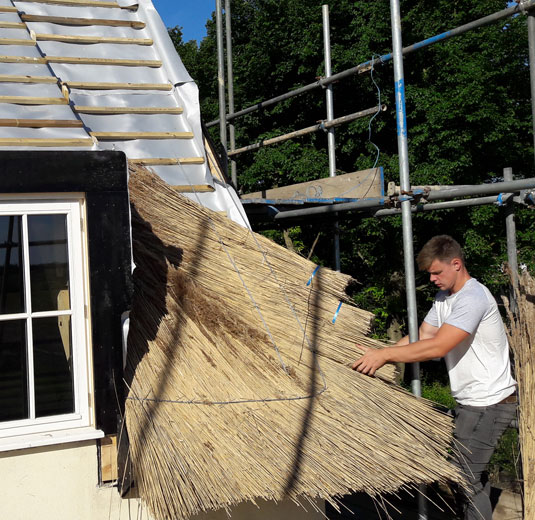

The reed then requires cleaning and sizing into bundles later in the year.For ease of handling most commercially grown reed is banded into large bales of 80-100. It is important that reed is tied, baled dry and kept dry.

All old thatch requires removal, the roof timbers are assessed and quite often additional rafters are required as helper rafters. It is our policy not to remove any existing timbers. The roof requires re-battening with tanalised batten fixed with galvanised nails. Tilting fillets will be required on all verges.
We normally fit a breather membrane under the battens. This keeps the building dry instantly, eliminates dust and debris falling through into the loft area in the following years, which creates dirt and a fire hazard. The reed is fixed to the roof with galvanised steel spikes driven into the rafters holding a galvanised steel 8mm rod. Average centres of fixing up rafters are 600mm. Our normal thickness is 14” (350mm).
A block cut ridge is fitted to the apex to seal the reed. Work normally cut to an ornamental pattern, conservation officers do sometimes stipulate a straight cut. Our normal practice is to completely net all the roof with 19g netting. Abutments sealed with mortar or lead as preferred or stipulated.
This system is only suitable for certain roofs when a sound thin layer of reed exists. The new reed is either pegged to a sound base or spiked through existing reed work. All the specs are similar to above although it is normally around 12” (300mm) thick.
The main advantages of this system are that it requires little disturbance to the roof. No timber works are involved. Only a limited amount of old thatch requires removal. A considerable cost saving can be achieved using this system.